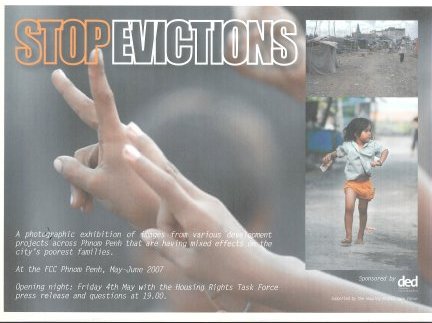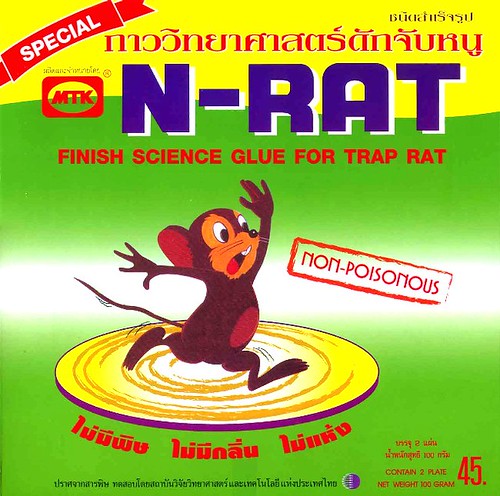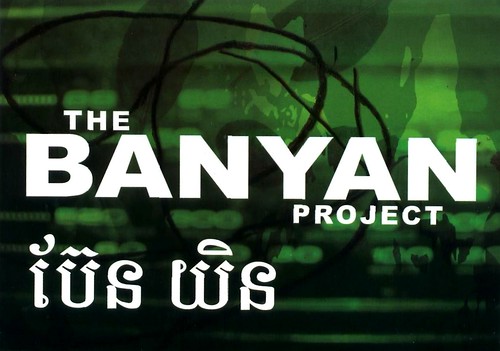‘Stop Evictions’ Exhibition May 4, Phnom Penh
May 1st, 2007 by Jinja
Stop Evictions: a photographic journey from eviction to relocation
Built on the efforts of Hallam Goad and photographer Niles Sprague, ‘Stop
Evictions’ combines images, film footage and comparative analysis to explore
the truth and consequences behind Phnom Penh’s Sambok Chab relocations.
At a Glance
Stop Evictions: a photographic journey from eviction to relocation, a
multi-media exhibit. Opens May 4, 7 p.m. Through June.
For more than a year, the forced relocations of Phnom Penh residents to
undeveloped, often unlivable, resettlement sites outside the capital has
sparked international outrage and political controversy.
In few places was the process more visible than the impoverished community
of Tonle Bassac’s Village 14, or Sambok Chab. In June 2006, Phnom Penh
Municipal officials and armed police began evicting more than 1,000 families
to make way for a development project financed by a private company.
There were standoffs and turmoil before police stormed the village, dismantled
homes and trucked reluctant squatters and their belongings to an undeveloped
site some 25 kilometers outside city limits.
On the new land there were a few public latrines, no drainage, no
sanitation, no electricity, no water supply, no shops, markets or schools
and no opportunity for employment. Human rights groups blasted the removal
as inhumane, and the new residences — 4-by-12-meter plots with no
structures or facilities – as unacceptable compensation. “We ask the viewer
to draw their own conclusions about the state of development in Cambodia.”
According to an NGO survey, within just three months of the eviction only 40
percent of the plots were occupied. Because of the harsh conditions most
families returned to Phnom Penh to live with relatives or on the street.
Nearly a year later, the debate about Sambok Chab continues to rage, and the
plight of those evicted has been echoed in similar incidents throughout the
Kingdom.
Now, during the months of May and June at the FCC Phnom Penh, the saga of
the displaced villagers will be told through heart-wrenching photographs
taken throughout the eviction process. “Stop Evictions” opens at 7:00 p.m.
on May 4 with a video screening, a presentation by the Housing Rights Task
Force, and the unveiling of some 35 images taken by professional
photographers, journalists and rights activists.
The collection is the brainchild of Hallam Goad, 37, a resident of Cambodia
since 1998 who had worked with relocation victims for years before
co-founding the NGO Sahmakum Teang Tnaut in 2005. For “Stop” he’s brought
together images, film footage and comparative analysis that seek to explain
the truth and consequences of the situation.
“The exhibition is to show how ridiculous and corrupt this process was, and
the impact it had on people. The idea is for tourists and the
English-speaking community to see a different side of Cambodia,” said Goad.
“We ask the viewer to draw their own conclusions about the state of
development in Cambodia.”
Goad sees the relocation as an abject failure, but he is quick to point out
that the selected images are meant not to preach, but to speak for
themselves about the pain, confusion and anger of the evictees. He was last
at the relocation site just days ago and calls the situation “just
miserable.”
“We’re not saying no one should be moved, that Phnom Penh should stand
still. Even the people understand this themselves. They’ve said to us,
‘We’re OK to move, just give us a chance to make a new living,” said Goad.
“Ever since 1998 you could see that sooner or later the city would push
these people off because the land is so valuable. We want people to
understand it’s the way they carried out the relocation, no the relocation
itself, that was a crap process.”
To illustrate this, Goad includes in “Stop Evictions” an example of a
successful relocation from almost a decade ago.
“In 1998 the municipality was involved in a constructive process,’” he said.
“Some 129 families were successfully relocated from near the Olympic Stadium
to a site five kilometers outside the city with land chosen by the people,
purchased by the municipality and supported by UNCHS and rights NGOs. It
shows that while relocation is a difficult undertaking it is possible to do
it effectively, humanely and to the benefit of all parties.”
Goad’s collection of evidence and imagery has attracted more than one
prestigious sponsor.
“Land rights are a hot topic, and we thought they had a good, creative
approach to bring the issue to the public,” said Anisha Schubert, of German
aid organization DED. “They’re not trying to be provocative, but they’ve
worked with many different people to focus on good stories.”
DED is the main sponsor of the FCC show, and it was initial assistance from
the Germans that got the project started last year. Goad and US photographer
Niles Sprague were funded to document the eviction and resettlement. Along
the way, the two teamed with journalists, activists and especially the
Cambodian Legal Education Center, to collect an effective record of events.
The photographs taken by Sprague and the CLEC team form the foundation of
“Stop Evictions.”
“Another aim of the show is to promote the Housing Rights Task Force, which
is a group of NGOs that pulled together as a response to growing issues,”
said Goad. “The idea is that instead of one or two groups jumping up and
down and saying this is bad, and possibly becoming a target, is to put
together a conglomeration of groups that can work together.”
The show is free, but may not be for the faint of heart. Goad said he’d like
to get several villagers to give firsthand accounts of their experience and
to display samples of the water available at the relocation site after
tested by the Pasteur Institute.
“This is an awareness raiser, but there are other things bubbling away: we’d
like to start a letter-writing campaign ahead of the Boeung Kak eviction and
maybe do some sort of fund raising,” he said. “But the most important thing
is to create dialogue. If people look at what happened at Sambok Chab – it
was a complete failure. It’s hard to imagine things getting worse.”
reproduced with kind permission from:
The Wires, Newsletter of Cambodia’s Foreign Correspondents Club
http://www.fcccambodia.com/newsletter/0507/
[from What's On] Tags:cambodia,exhibition





















